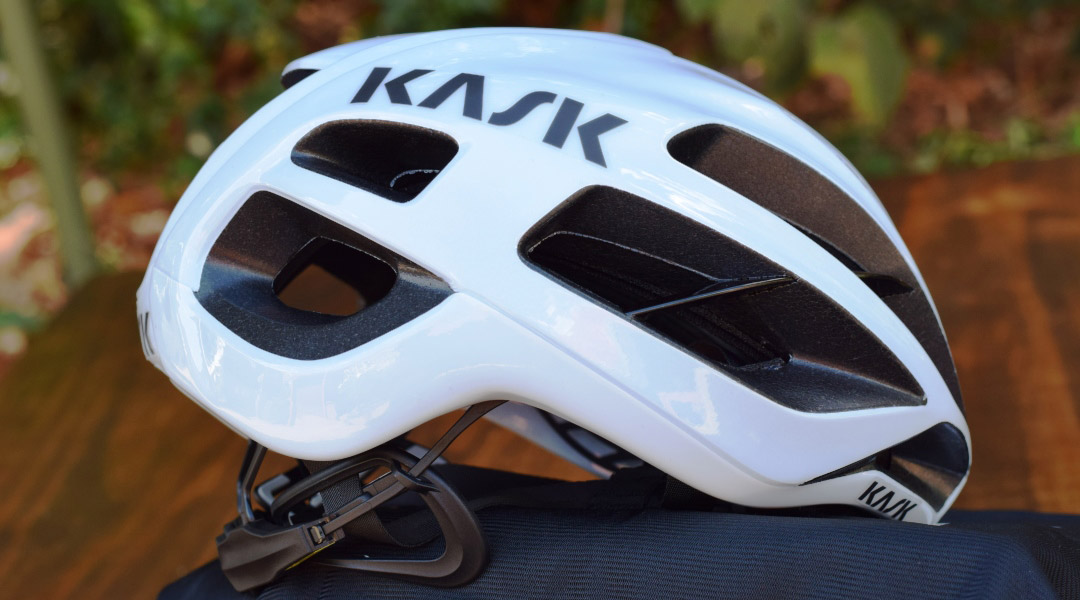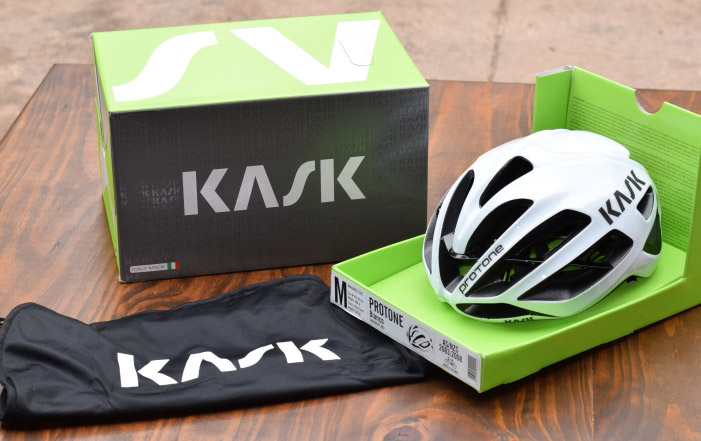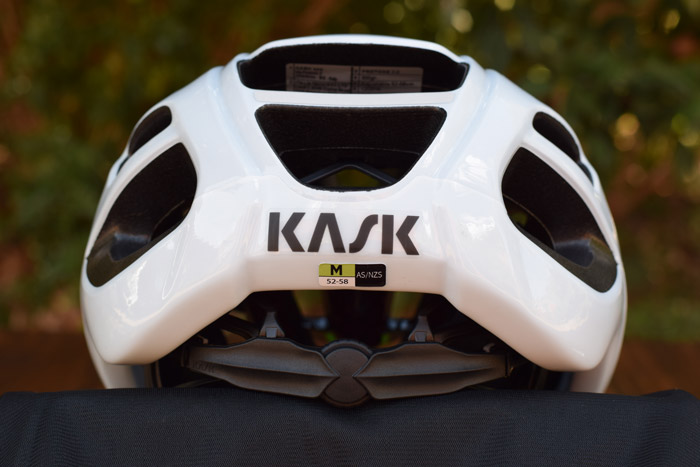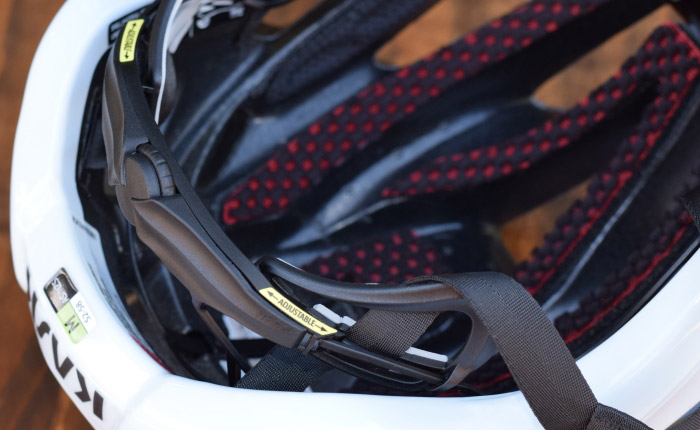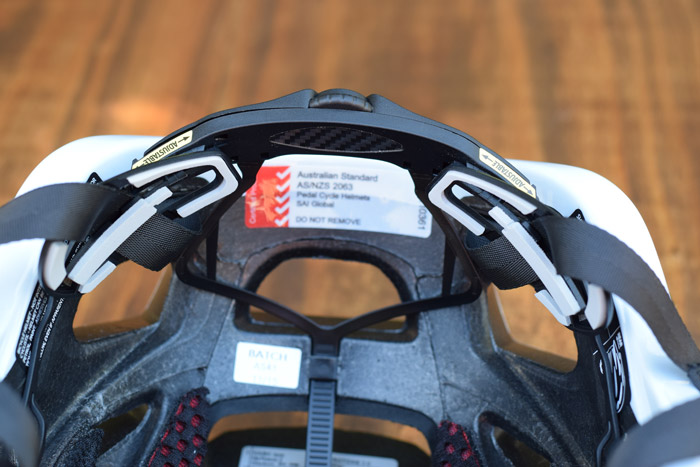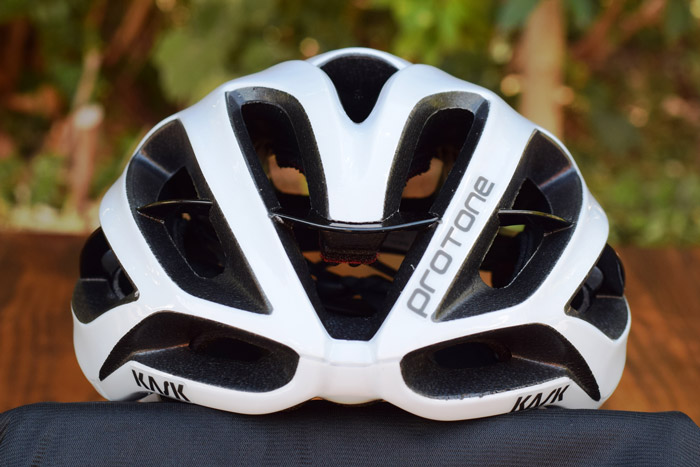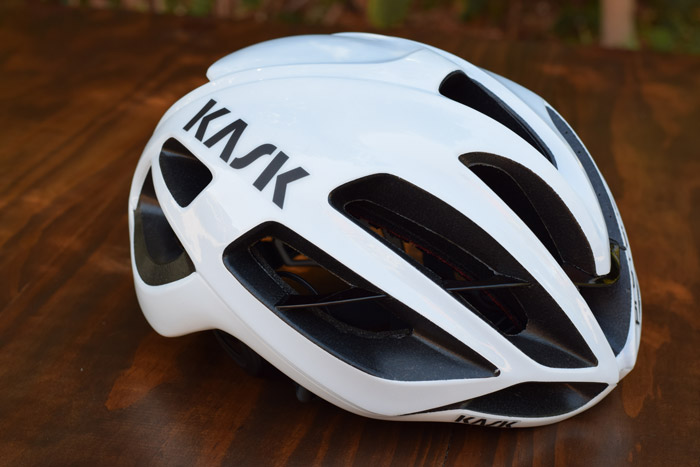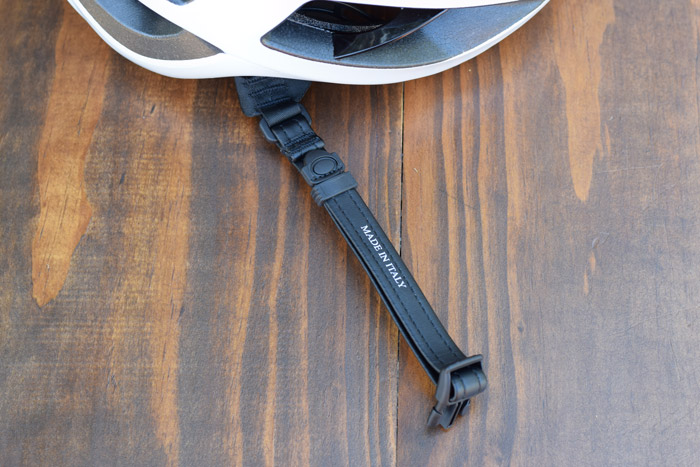The Kask Protone helmet is the latest road helmet from Kask in a lineup that now includes five models. The appeal of the Kask Protone is that it’s an aero helmet but also has large front vents to allow cooling, and it’s light at only 215 gram for the medium size. Like the Giro Synthe I would call it a semi-aero helmet.
The Kask Protone helmet was first used at the 2014 Tour de France by Team Sky, and was then released for sale to nearly everyone except Australia a year later, finally after a delay because of our unique helmet laws the Protone was officially released for sale late in 2015.
Unboxing the Kask Protone helmet
Like other Kask helmets I have bought the Protone comes in a sturdy box with pull out tray that comes in really handy for storing in cupboards especially when you have more than one helmet. Just keep stacking the boxes on top of one another and pull out the one you need. Included in the box is a textile bag for carrying the helmet with your race gear when not on the bike.
Features and Fitting
The Kask Protone comes in two sizes, the medium is for 52-58cm (20-1/2 – 22-7/8 Inches) heads and the large is for 59-62cm (23-3/8 – 24-1/2 Inches), the weight as per Kask is 215 grams for the medium and 250 grams for the large. My medium weighed in at 228 grams.
The Kask Protone is a breeze to adjust, like the Kask Infinity it has the Octo Fit micro dial adjuster and floating cradle, you can adjust the cradle up and down to provide support where it suits and then adjust the dial to tighten.
The front of the Kask Protone features some aggressive vents for an aero helmet, eight massive vents take up the the entire frontal area. The top of the helmet is largely a smooth surface that tapers into a rounded back section with six exhaust vents.
The Protone features a leather chin strap the same as other models and there are two types of padding in the helmet. The front and lower pads are coolmax fabric while the top pads are 3D Dry, all of the pads are removable so they can be washed.
Kask Protone Specifications
Below is a list of features and technology that go into making a Kask Protone, you can visit Kask for more details and the range of colours.
3D dry: The tridimensional 3D DRY padding utilizes a multi-layer open cell construction process: high technology for the best comfort and performance.
Aero Control: Incredibly aerodynamic and top performing shell, tested in the wind-tunnel and able to provide a really impressive CX rate. Any position the head will assume the outflow of the air will be perfectly in line with the helmet.
Carry Bag: To prevent surface damage in transit.
Coolmax: Removable and washable inner padding in Coolmax® material
ECO Chinstrap: Chin pad with eco-leather chinstrap
Frame: In the case of a large impact, the Protone frame prevents the helmet breaking into pieces.
In Moulding: The innovative “in moulding” technology, joining the inner polystyrene cap to the outer polycarbonate one, ensures a better shock absorption.
Multi In-Moulding Technology: The MIT Technology, applied to all KASK cycling helmets, guarantees a higher safety and complete protection thanks to the polycarbonate layer that covers the shell on the top, on the base ring and on the back.
OCTO FIT: Rubberised Micro Dial adjuster provides improved finger grip. Floating cradle contact points combine internal gel pads for optimum comfort. These supports are designed to oscillate freely through 180° allowing a perfect fit on any shaped head. The Skeletal Brackets of the cradle have been designed and refined to provide the best fit and support whilst being as light as possible
Sanitized: Inner padding fabric treated with antibacterial and antimicrobial Sanitized® process.
Visibility: High visibility stickers for maximum safety even in poor visibility conditions
Review Summary
After using a Kask Infinity for racing and also using a Kask Mojito I was pretty excited to review the Kask Protone, it lived up to all expectations really is a nice helmet to wear. It’s light and the Octo Fit system so good that it’s easy to forget you’re actually wearing a helmet. There is less wind noise than the Mojito and importantly sunglasses fit around the cradle easier, although different brands of glasses may be different. The Kask Protone looks stylish and claims impressive aerodynamics.
The leather chin strap will appeal to riders who haven’t worn a Kask helmet before, it stops irritating scratching you can get with other types of straps.
I bought my own helmet for the review and it cost me $389, not cheap but then neither are models you would compare to the Protone. I didn’t score the helmet review down too much on price for that reason.

